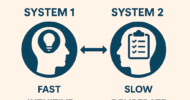The United States spends more of their GDP on health care than any other developed nation, and yet it produces some of the poorest outcomes — notably in the field of maternal and infant health.
The advent of digital health has presented the opportunity for a paradigm shift in the delivery of care, and support from investors and policy-makers shows that as far as they’re concerned, digital health is not a new frontier for health care, but the current playing field.
A staggering $14.6B in funding for digital health in 2018 — an almost 250 percent increase from 2017, a number that represents a continuous increase from each preceding year — and the recent breakthroughs in the government’s acceptance of mHealth and telehealth technology — like the three new CPT codes for Medicare reimbursement of remote patient monitoring in the 2019 Physician Fee Schedule and Quality Payment program — are patent examples that the distinction between “digital health” and “health” is fast disappearing.
Undoubtedly catalyzed by this support, many digital health tools have overcome the traditional conservatism of many health care professionals to firmly establish themselves in the space. In this climate, the time for health practices and providers to pilot and play with disruptive technologies is over. Implementing digital health tools is an executive imperative for any practice that wants to remain successful and relevant in the space.
Consumer expectations have driven these operational imperatives across the health care marketplace. Smartphones and other technologies have provided platforms that shift the value-focus from goods to services in the consumer space, and patients are looking for the same value from their health care provider. They want an experience — health care that actively anticipates and responds to their needs rather than simply responding to and fixing a problem.
Digital health tools have the potential to provide this for patients, but not all digital health tools are created equal. To successfully meet patient expectations for connected care, while delivering the outcomes that providers are looking for, digital health tools must embody the four Cs of primary care: continuous, comprehensive, connected and coordinated. These are the areas where the U.S. health care system has failed in the past and where digital health is poised to take an edge.
Four Cs notwithstanding, a digital health tool is only helpful if it is successfully adopted and implemented by a practice. Here are some of the things that successful tools are doing right:
Focus on provider experience. Providers are busy and overwhelmed. They do not have the time to embrace technology that a.) is difficult to use, b.) disrupts their workflow and c.) does not provide actionable data. Technology that delivers a user-centered design, and facilitates the integration of patient data into workflows and clinical routines is essential. The delivery of actionable data to providers through a user-friendly interface enables efficient and better clinical decision-making, allowing clinicians to identify gaps in care and intervene with medication management, education, and team-based care, among others.
Have a clear value proposition. A value proposition that can be identified and quantified is essential for driving technology adoption by providers. For example, synchronous connectivity can facilitate clinical efficiency, provide the ability to manage high-risk conditions and to offer risk-based care, improve access to care and enable shared decision-making — ultimately, leading to the number-one provider priority: better outcomes.
Find the right fit. Not every provider is the perfect client for a specific innovation. Successful adoption comes from knowing the audience: offering selectively to groups that are in a value-based contract — or based on level of experience or career — can be the difference between adoption and rejection. Physicians early in their careers who are building their patient panels may have a shorter learning curve for health information technology, and those that are at the latter part of their careers and confident of their clinical finesse may be looking for remote work options.
Educate users. Even the most user-friendly of interfaces comes with a learning curve. Offering user group meetings for peer-to-peer, vendor-to-provider discussions and problem-solving is one way of supporting providers during a transition. A physician champion, support staff and IT service readily available for providing assistance and answering questions can help with a painless and seamless integration of new technology.
Don’t forget the patient. Though patients are not on the prescribing end of digital health tools, they are significant stakeholders, and their reactions and responses to digital tools can affect adoption. The consumer-facing interface should be intuitive and easy-to-use with readily-available, virtual “front desk” support when issues occur, such as a customer service line. Patients are looking for the same benefits and experience from their health tools that they receive in the consumer marketplace — service-oriented, convenient, simple to use and personalized to fit their individual needs.
Enabled by digital applications, primary care that is continuous, comprehensive, connected and coordinated can change the current U.S. health care paradigm and address the needs of those that are most vulnerable in our population.
Nirmal Patel is chief clinical transformation officer, Babyscripts.
Image credit: Shutterstock.com























![Rethinking medical education for a technology-driven era in health care [PODCAST]](https://kevinmd.com/wp-content/uploads/The-Podcast-by-KevinMD-WideScreen-3000-px-4-190x100.jpg)






